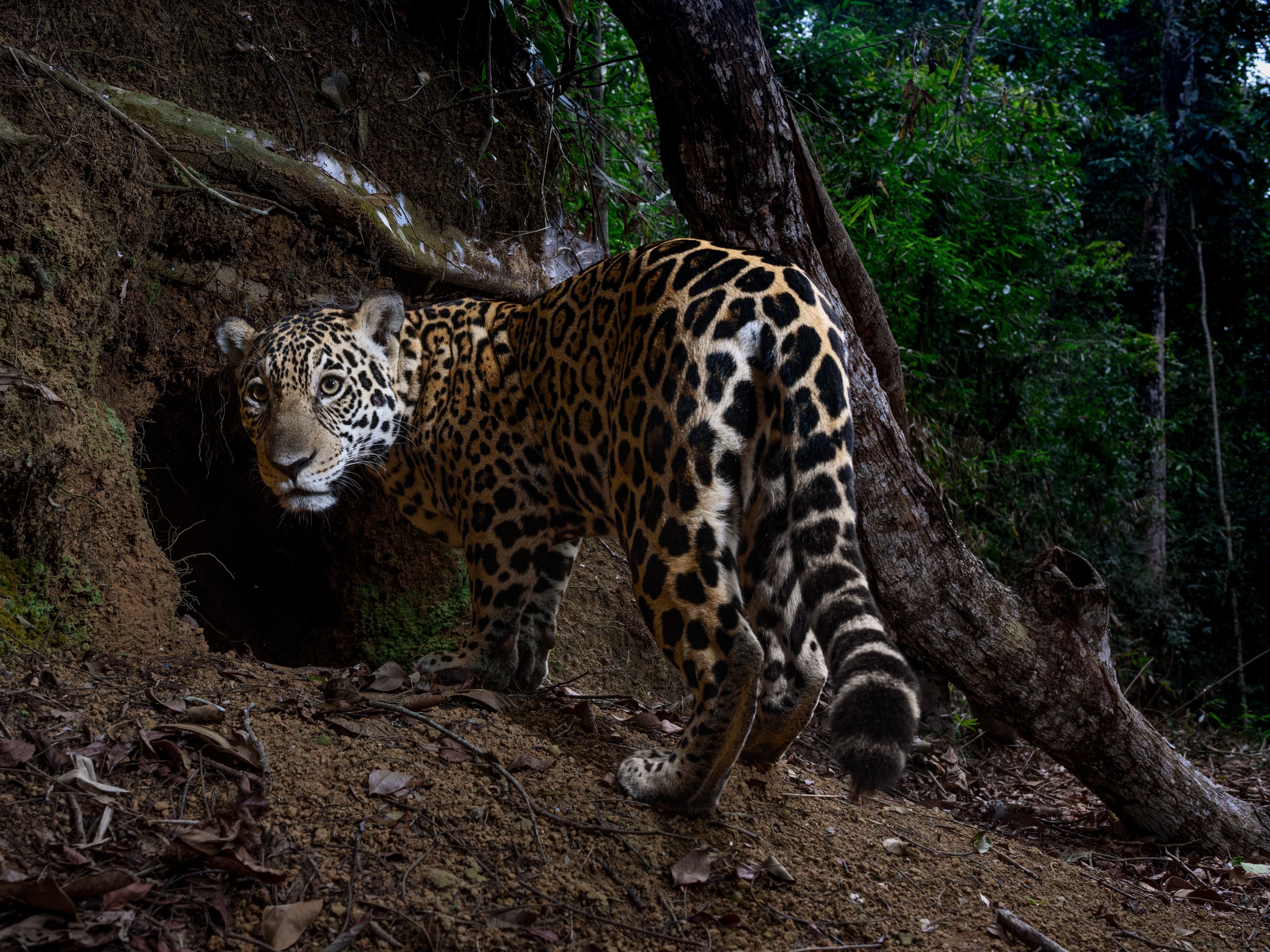
New Snub-Nosed Monkey Discovered, Eaten
Myanmar species sneezes uncontrollably when it rains, experts say.
A new monkey species in Myanmar is so snub-nosed that rainfall is said to makes it sneeze—but that's apparently the least of problems.
The only scientifically observed specimen (pictured above) had been killed by local hunters the time researchers found it—and was eaten soon after. But local demand for monkey meat is only one reason the new species is already considered endangered.
(Also see "'Extinct' Bird Seen, Eaten.")
Scientists first learned of "Snubby"—as they nicknamed the species—from hunters in the remote, mountainous Kachin state (map) in early 2010, according to the U.K.-based conservation group Flora & Fauna International (FFI), which announced the discovery Wednesday.
The hunters told the team of R. strykeri's fleshy lips, upturned nose, and odd respiratory issue: Rain falling into the monkeys' noses possibly causes the animals to sneeze, so they often spend soggy days with their heads tucked between their knees, the hunters said.
"We were surveying during the rainy season, and we were asking, 'Does it make sense to survey these monkeys in the rainy season?'" said Frank Momberg, FFI's Asia-Pacific development director. The hunters said, "'Of course! It's much easier to find them'" due to the sound, he added.
"Hunters hunt them more often in the rainy season, because they are much easier to locate—normally they're pretty quiet."
Eventually other members of the team did find live snub-nosed monkeys, but the creatures escaped before pictures could be taken, Momberg said. (FFI has, though, released a photo composite of the dead R. strykeri's face on the torso of a live monkey of a different species [link to BBC News].)
Other snub-nosed monkey species are known from China and Vietnam, but R. strykeri is the first known species in Myanmar (Burma). Ranging across about a hundred square miles (270 square kilometers), the new species is also distinguished by its wispy white beard and ear tufts as well as its relatively long tail, according to FFI.
(Related: "Ultrarare Shark Found, Eaten.")
New Snub-Nosed Monkey Already Endangered
Generally preferring bear meat, the local hunters don't usually target the snub-nosed monkey, Momberg said. But "when a hunter comes across a monkey and there's nothing more delicious, he will shoot it."
(Related: "Lemurs Hunted, Eaten Amid Civil Unrest, Group Says.")
The bush-meat trade is just one of the pressures facing R. strykeri.
Chinese logging companies, for example, are encroaching on the new snub-nosed monkey's habitat, FFI says. And with logging comes more than habitat destruction.
As trees are extracted, so are the roots that anchor soil to steep mountains, leading to increased landslide risks. And as logging camps proliferate, so do guns, traps, and demand for bush meat.
Based on talks with the Lisu hunters, scientists estimate that only about 300 of these monkeys remain—few enough to qualify R. strykeri for "critically endangered" status on the International Union for Conservation of Nature's Red List of Threatened Species, FFI says.
But if the new species' noisy sneeze gives them away to hunters—and presumably other predators—why did R. strykeri evolve its odd face? To find out, Momberg said, "we would need to habituate a group of these monkeys [to humans] and then observe them in the wild. That would take at least a year."
The study of the new species of snub-nosed monkey appears in the October issue of the American Journal of Primatology.





